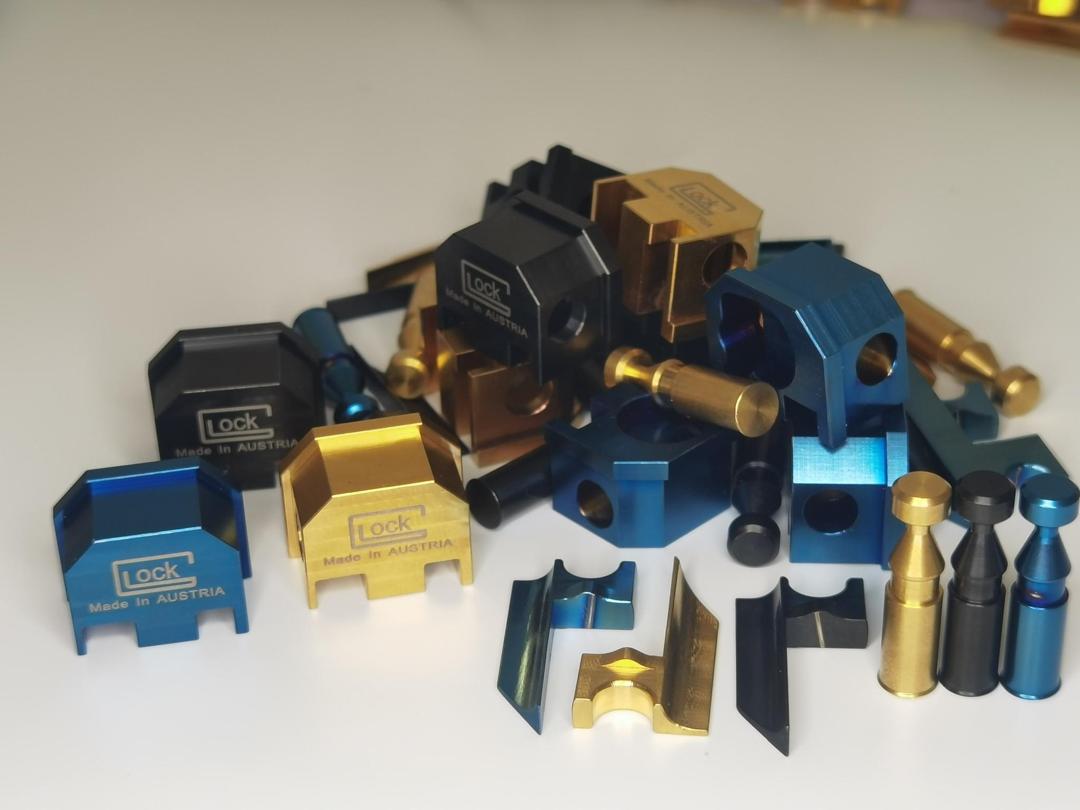The Glock Switch: Understanding the Controversy and Legal Implications
 The "Glock switch," also known as an auto sear or "Glock auto switch," is a small device that has generated significant controversy in recent years. This tiny, seemingly innocuous piece of metal or plastic has the potential to transform a semi-automatic Glock pistol into a fully automatic weapon, making it a focal point of discussion among gun enthusiasts, law enforcement, and policymakers. To understand the implications of the Glock switch, it is essential to examine how it works, its legality, and the risks associated with its use.
The "Glock switch," also known as an auto sear or "Glock auto switch," is a small device that has generated significant controversy in recent years. This tiny, seemingly innocuous piece of metal or plastic has the potential to transform a semi-automatic Glock pistol into a fully automatic weapon, making it a focal point of discussion among gun enthusiasts, law enforcement, and policymakers. To understand the implications of the Glock switch, it is essential to examine how it works, its legality, and the risks associated with its use.What is a Glock Switch?
A Glock switch is a device designed to convert a standard semi-automatic Glock handgun into a fully automatic firearm. Typically installed in the back of the Glock's slide, this device alters the firing mechanism by bypassing the trigger's reset function, allowing the gun to fire multiple rounds with a single pull of the trigger. The result is a rapid burst of gunfire that mimics the behavior of a submachine gun.
These devices can be made from metal or 3D-printed plastic and are small enough to fit into a pocket, making them easily concealable. While some Glock switches are manufactured commercially for law enforcement and military purposes, many are homemade or obtained through illegal channels, contributing to their proliferation.
The Legal Landscape
In the United States, Glock switches are classified as machine gun conversion devices under the National Firearms Act (NFA) of 1934. As such, they are highly regulated, and owning or manufacturing a Glock switch without the proper federal license is illegal. The Bureau of Alcohol, Tobacco, Firearms, and Explosives (ATF) considers any Glock modified with a switch to be a machine gun, subjecting it to strict registration and ownership requirements. Violating these laws can result in severe penalties, including hefty fines and long prison sentences.
Law enforcement agencies are increasingly concerned about the rising availability of Glock switches on the black market and through online platforms. These devices have been found in the hands of criminals, gang members, and others who use them to commit violent crimes, making them a high priority for federal and state law enforcement efforts.
Risks and Controversies
The use of Glock switches poses several significant risks. Firstly, a fully automatic Glock can be challenging to control due to its rapid rate of fire and recoil. This makes it less accurate and increases the likelihood of collateral damage in high-stress situations, such as self-defense or criminal activity. The potential for unintended injury or death is much higher when a firearm can discharge dozens of rounds in a matter of seconds.
Moreover, the proliferation of Glock switches raises significant public safety concerns. Law enforcement agencies warn that these devices could increase the lethality of firearms used in crimes, putting officers and civilians at greater risk. The ease with which they can be acquired or manufactured makes regulating their distribution and use a daunting challenge.
Public Debate and the Future of Glock Switches
The debate over Glock switches encompasses broader discussions about gun control, public safety, and Second Amendment rights. Advocates for stricter gun control argue that the use and manufacture of such devices should be more tightly regulated to prevent them from falling into the wrong hands. Conversely, gun rights proponents emphasize that responsible gun owners should not be penalized for the actions of a few who misuse firearms or conversion devices.
As technology evolves, the challenge of regulating Glock switches and similar devices is likely to intensify. Law enforcement agencies and policymakers will need to balance public safety with the rights of gun owners while staying ahead of technological advancements that could further complicate this contentious issue.
Conclusion
The Glock switch is a powerful and controversial device that has sparked significant debate and legal challenges. While it offers a glimpse into the future of firearm modification, its risks and legal implications cannot be overlooked. Understanding the complexities surrounding Glock switches is essential for anyone interested in gun ownership, public safety, or the evolving landscape of firearm regulation in the United States.